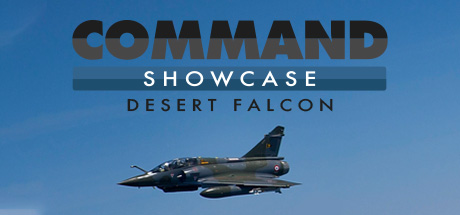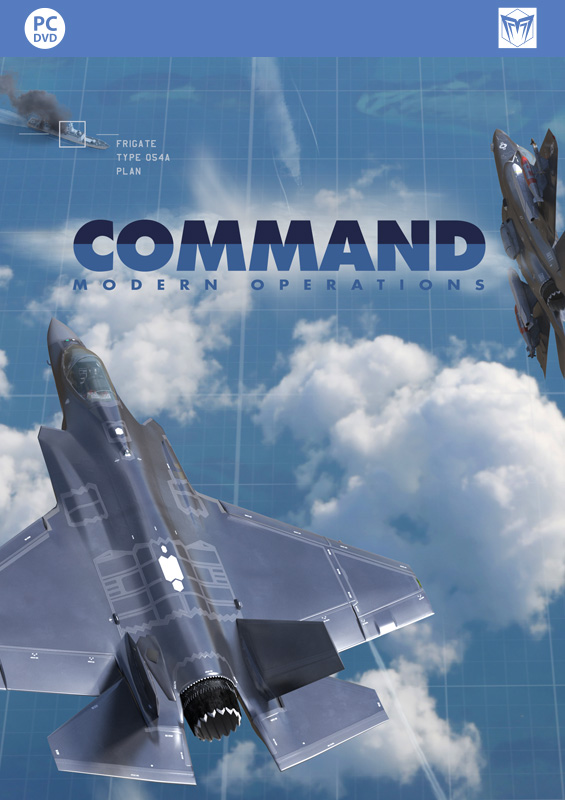No regrets: Command v1.07 now available
 Well, this certainly took a while.
Well, this certainly took a while.
Following the gargantuan releases of “Tiny”/”War Planner”/v1.05 and the more recent “Number of the beast”/v1.06, we had a lot of technical debt to own to and a lot of catching up to do. It was not unexpected that the rapid introduction of so many new groundbreaking features would bring about a bunch of new problems and issues, which needed to be addressed. There was simply too much baggage to keep hauling with us on the way forward.
The new major CMO release, version 1.07, is therefore very much a “service pack” (raise your hand if you recognize the term without googling it). The primary emphasis has been on identifying and fixing the various issues accumulated over the last couple of years, ideally in order of severity/priority. Performance, particularly on the simulation engine, has also been substantially improved. If you are a Command long-timer, you should notice (most if not all of) your past pain-points gone; and many scenarios whose scale/complexity previously placed them out of your hardware’s reach should now be perfectly playable. If you are a more recent player (welcome!), you get a nicer experience out of the box.
This is not to say the new release is bereft of new mechanics to explore and simulated toys to play with, though. A quick summary of the new additions:
* A new map mode of showing aerospace units at their true altitude (instead of only as ground-tracks on the planet surface), sometimes called “pin-cushion view” (disabled by default). This mode makes it easier to visualize the vertical placement of aerospace units, and can be particularly helpful when vertical positions play a crucial role in sensor & weapon interactions – think satellites, ballistic missiles and ABMs, even the altitude differences in air-to-air or surface-to-air engagements. Phil Gatcomb has already made a sneak-peek video for this, check it out.
* A new HTML-rendering backend, using Microsoft’s new WebView2 rendering engine. You should notice improved HTML rendering on the DB-viewer and other UI elements that use HTML sources. This also allows richer custom UI elements at the beginning of a scenario (e.g. to define custom options for the scenario, difficulty settings etc.)
* A new wrinkle on air-to-air refueling: Aircraft fuel on-load rate restrictions (requires v508+ DBs). When large tankers such as KC-135s or KC-46s refuel tactical aircraft, the bottleneck on fuel transfer is usually not the tanker’s offload capacity (which is huge; these booms are designed to fill-up B-52s and other monsters), but the intake rate of the receiver aircraft. This is now properly modelled.
* Indicators for aircraft contrails and ship/submarine wakes can now be displayed on the map, under a unit’s datablock. This makes it easier for the player to be more aware that his units may be visually detected at significantly longer ranges because of these factors. These indicators can be disabled on the “Map Settings” menu if they clutter the map unacceptably.
(Clarification: Contrails and wakes have been part of the simulation engine since Command’s original 2013 release. This change adds visual indicators for them.)
* Various “quality of life” improvements across the UI and particularly on the mission editor and various strike-planner windows.
* The latest releases of the DB3000 and CWDB databases, with the completion of a major year-long milestone: The China national review (see this overview for more details). The Command database is now arguably one of the most comprehensive open-source compilations of information on modern Chinese military platforms.
The full release notes are available HERE.
We want to thank both our internal beta testers who helped make this a solid release, as well as our public user community who contributed feedback on the public beta. You are part of this.
As always, there is no rest for the wicked and certainly not for the Command dev team. CPE v2.4, a big update to the Command-PE series has also been released this week, and CMO itself is already tweaked and improved for the next public update. Stay tuned as the dev team assembles and prepares some new amazing features for 2025 that will undoubtedly take the Command series to the next level in modern-era wargaming.
Command Showcase: Icebreakers released!
Get it at MATRIX GAMES or STEAM
Command Showcase: Operation Desert Falcon released!
Get it at MATRIX GAMES or STEAM
In the shadow of the Beast update: Community Scenario Pack #48 now available
 Following the groundbreaking release of the v1.06 update, bringing 64-bit finally to the mainstream version, it is now appropriate for a new release of the Community Scenario Pack (CSP).
Following the groundbreaking release of the v1.06 update, bringing 64-bit finally to the mainstream version, it is now appropriate for a new release of the Community Scenario Pack (CSP).
Brandon Johnson (Kushan) has updated the pack to version #48, with 12 brand-new scenario and 9 updates to existing works. Additionally, the default WRA firing ranges for AAW weapons have been set to “50% of max range”, and all scenarios have been rebuilt to the v501 releases of the DB3000 and CWDB databases.
Let’s take a look at new additions:
Action in the Bay of Vlore, 1969: After 1960, Albania broke ties with the Soviet Union and allied with China. In 1968, Albania again snubbed the Soviet Union by withdrawing from the Warsaw Pact in protest over the invasion of Czechoslovakia. The Soviet Union has decided to make a show of force by sailing ships into the Bay of Vlore and threatening to blockade ships attempting to enter or leave the Port of Vlore.
Dutch-Venezuelan Fishing Incident, 2025: Venezuelan fishing boats are violating Dutch fisheries. The Netherlands sends ships to address the issue. They have permission to fire on fishing boats that do not comply with their orders to stop and be boarded for inspection. Venezuela is unlikely to take kindly to this…
Jeannes Last Jaunt, 2009: It’s 2009 and a coup in Guinea has France trying to get their people out of an increasingly unstable situation. They’ve sent the aging helicopter cruiser Jeanne d’Arc and some supporting forces to get the job done. It shouldn’t be too difficult, right?
Kicking Down the Door, 2019: In August 2017, Donald Trump hinted at possible military action against Venezuela due to its crumbling democratic institutions. By December 2018, Russia’s Ambassador in Caracas claimed foreign powers were plotting to topple the Venezuelan government. The situation escalated in January 2019 when Juan Guaido, an opposition lawmaker, declared himself the “interim president” of Venezuela, contrary to the country’s constitution. While the U.S. and several nations supported Guaido, Maduro, the standing president, labeled this as a U.S. coup attempt. Countries like Russia, China, and Cuba stood by Maduro. Tensions further intensified when Venezuelan military forces loyal to Maduro blocked foreign aid on 23 February 2019. In response to this and Guaido’s appeal for international help, the U.S. took action on 24 February 2019.
Mediterranean Fury 7 – Under Pressure, 1994: You command the USS Nimitz CVBG, along with the newly arrived HMS Ark Royal. The two carriers have worked together in the Indian Ocean and will now move through the Med and into the Atlantic as a team. You have three major tasks: Neutralize the Black Sea Fleet; establish air superiority over Thrace and the Turkish Straits area, and significantly degrade the Bulgarian air force. USS Iowa and Kearsarge have a secondary task to complete. But you are under pressure to get it done quickly, with limited resources and with severe logistic constraints.
Operation Brass Drum – Second of Desert Storm, 1993: In the wake of a civil war that erupted in Tajikistan, Iran began supporting the Tajikistan opposition. However, their alleged involvement in a plane bombing that killed 176 people, half of whom were U.S. citizens, strained international relations. Despite Iran’s denial of involvement, a betrayed spy provided evidence against them. As a result, the Security Council displayed distrust towards Iran. In response, the Iranian President imposed a blockade on the Strait of Hormuz. Given the recent surge in terrorist activities and U.S. political involvement in the Persian Gulf, this act intensified tensions. The U.S. President responded by ensuring freedom of navigation through the strait and utilizing existing U.S. military presence in the region. Meanwhile, Iraq seemed to align with Iran’s stance, frequently violating restrictions set after the Gulf War. It appears the Middle East may be on the brink of another Desert Storm.
Operation Ghost Rider, 1985: A long-range strike from the UK on a simulated airfield 100 miles southwest of Goose Bay, Labrador by 10 F-111Es from the 20th Tactical Fighter Wing on October 18, 1985. This exercise was one of the proof-of-concept operations for Operation El Dorado Canyon, the April 1986 strike on Libya.
Operation Gray Advantage, 2023: The current Standing NATO Maritime Group 1 is sent to track a Russian task force making its way to the Denmark Strait. Right now, there are only three ships in the flotilla, so I’m assuming other assets get attached. Things are very tense as the scenario starts–it assumes the destruction of a US drone last month was followed by the shoot-down of a Russian Su-27 over Romania. Russia has sortied a task force and it is probably on its way to the Mediterranean. Russia also has something to prove with this mission. As you will see, things escalate…
Penetrating The Blockade, 2027: China has declared a de facto blockade of Taiwan. A week earlier, the 3rd MLR successfully interdicted some PLAN forces heading to waters off east Taiwan, however it is expected that a good number of PLAN navy sub surface assets leaked through, while other PLAN assets had already moved past the 1st Island Chain before the blockade was announced. The PLAN Shandong CSG is presumed to be somewhere in the Western Pacific. It is expected to be tasked with disrupting allied forces resupply efforts to Taiwan and Allied forces.
The 2023 North Korean Nuclear Attacks Part 1, 2023: Short scenario, all you really need to do is sit back and watch. You can probably play it in real time if you’re interested in observing a ballistic missile attack. (The story is based on The 2020 Commission Report on the North Korean Nuclear Attacks Against the United States by Dr. Jeffrey Lewis, but updated to reflect 2023 politics)
The Old vs the New – The Madagascar Crisis, 2025: Following Madagascar’s tumultuous 2023 elections, the nation intensified its ties with China, culminating in numerous treaties in 2024 that bolstered economic and political relations. Concurrently, Madagascar escalated its territorial dispute with France over Indian Ocean islands. However, the new government faced internal dissent, further exacerbated by its inadequate response to cyclones in 2024, leading to widespread protests and a violent crackdown. In 2025, an attempted coup instigated clashes between loyalist and opposition forces. Amid this chaos, France and China bolstered their military presence, with confrontations between the two powers in the Indian Ocean escalating. The conflict saw alleged war crimes and the killing of French NGO workers by Madagascar’s air force. Consequently, France has opted for airstrikes against the Malagasy loyalists, aiming to bolster the opposition and reassert its waning influence in former colonies.
Tighten the Straitjacket, 2027: Scenario is focused on the 3rd MLR located on the Philippines, facing the Straits of Luzon. The scenario assumes China just announcing a blockade on Taiwan, with a PLAN SAG heading to Taiwan’s east coast to carry out a blockade of Hualien port. Your mission is to degrade/destroy the SAG.
The new community scenario pack is, as always, available for download at the Command Team site, and also on the Steam workshop.
The CSP now proudly counts 587 scenarios in its stable!
Command Showcase: Desert Falcon announced






